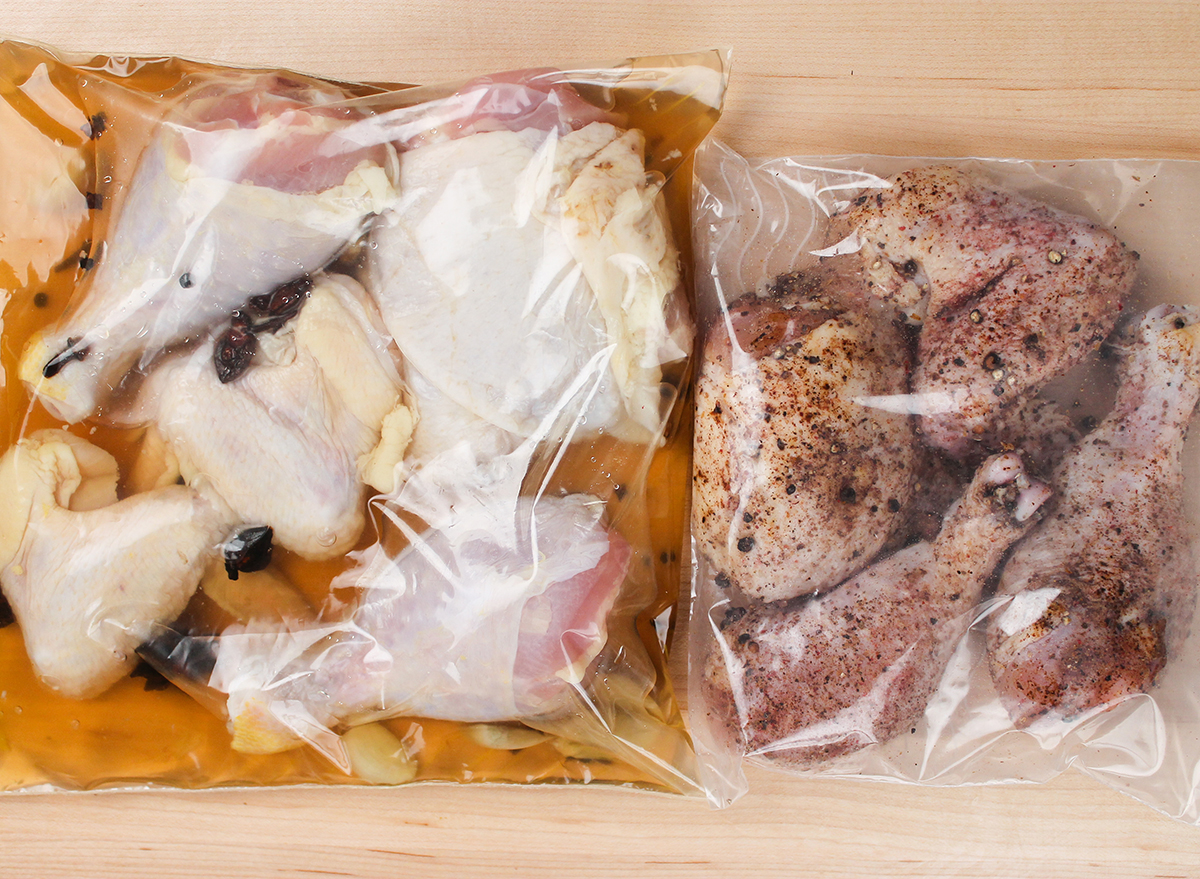Two Ways To Make a Simple Brine

How upsetting is it when you bite into a dry, flavorless pork chop or turkey breast? Extremely, we know. Luckily, though, bland meat can be avoided by brining before cooking. Even if you're not exactly sure what a brine is, you've probably made one before. Hint: it's the salt and water solution you soak a Thanksgiving turkey in. Technically, that's a wet brine; there's also a dry brining method that involves mostly salt. We've covered both in this article.
A brine will improve both the flavor and texture of meat thanks to science. After meat is submerged in a salty liquid (the wet brine), osmosis encourages that liquid to penetrate the meat, imparting a more tender texture and gently flavoring the protein. Dry brining (which is technically a type of curing) involves rubbing meat with a hefty layer of salt, which penetrates the meat's proteins to both tenderize and season.
But which is the single best way to make a brine? Honestly, it's up to you: Professional chefs and talented home cooks alike will debate the merits between wet and dry bringing until the end of times. Some swear wet brine yields juicier meat, which is ideal for lean meats that are always pretty dry, like turkey. However, others are sure that dry brining helps create equally tender, juicy, flavorful meat, and there's no need to submerge anything—especially an enormous bird or cut of pork or beef—in a large vat of water. At the end of the day, it's all about personal preference. Regardless of which brine method you choose, to ensure the meat cooks evenly, let it come to room temperature (not more than 2 hours) before cooking.
For a wet brine
Make the liquid base

In a large nonreactive container, combine 4 cups water, 1/4 cup kosher salt, and 2 Tbsp granulated or brown sugar (increase amounts using this ratio for larger meats, like a whole turkey). Stir to dissolve the sugar.
Add the flavor and spice

For extra flavor, pour half the liquid mixture into a pot and add a few smashed garlic cloves, whole peppercorns, and spices like allspice berries, star anise, whole cloves, chili peppers, etc. Exact measurements don't really apply here, so feel free to adjust to your liking. Bring to a boil, then combine the mixture with the remaining brine. Chill for at least an hour before using—it is very important to bring the temperature of the brine down before using it on the meat.
Add the brine to the meat

Place the meat in a zip top bag (or, if larger, a brining bag or even a large bucket with a lid) and pour the brine over. Close the bag tightly.
Chill in the refrigerator

Transfer to the refrigerator and chill. Brine the meat for about 1 hour per pound. Let the meat come to room temperature, then cook as desired.
For a dry brine
Make the dry brine

In a small bowl combine 1/2 tsp kosher salt and 1/4 tsp granulated or brown sugar per pound of meat. For extra flavor, add 1/4 tsp per pound of freshly ground black pepper or other dry spices like paprika, cayenne pepper, cumin, or sumac. Rub mixture all over the meat.
Place meat in a zip top bag

Place meat in a zip top bag (whole turkeys and chickens can be placed on a sheet pan, uncovered) in the refrigerator and chill for up to 48 hours. Let the meat come to room temperature, then cook as desired.








